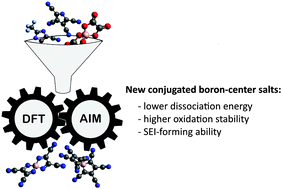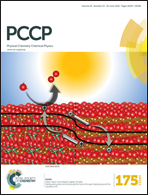New boron based salts for lithium-ion batteries using conjugated ligands
Abstract
A new anion design concept, based on combining a boron atom as the central atom and conjugated systems as ligands, is presented as a route for finding alternative Li-salts for lithium-ion batteries. The properties of a wide range of novel anions designed in this way have been evaluated by DFT calculations focusing on three different fundamental success factors/measures: the strength of the cation–anion interaction, ultimately determining both the solubility and the ionic conductivity, the oxidation limit, determining their possible use vs. high voltage cathodes, and the reduction stability, revealing a possible role of the anion in the SEI-formation at the anode. For a few anions superior properties vs. today's existing or suggested anions are predicted, especially the very low cation–anion interaction strengths are promising features. The design route itself is shown to be versatile in determining the correlation between different choices of ligands and the resulting overall properties – where the most striking feature is the decreased lithium cation interaction energy upon using the (1Z,3Z)-buta-1,3-diene-1,2,3,4-tetracarbonitrile ligands. This also opens avenues for the further design of novel anions beyond those with a boron central atom.



 Please wait while we load your content...
Please wait while we load your content...